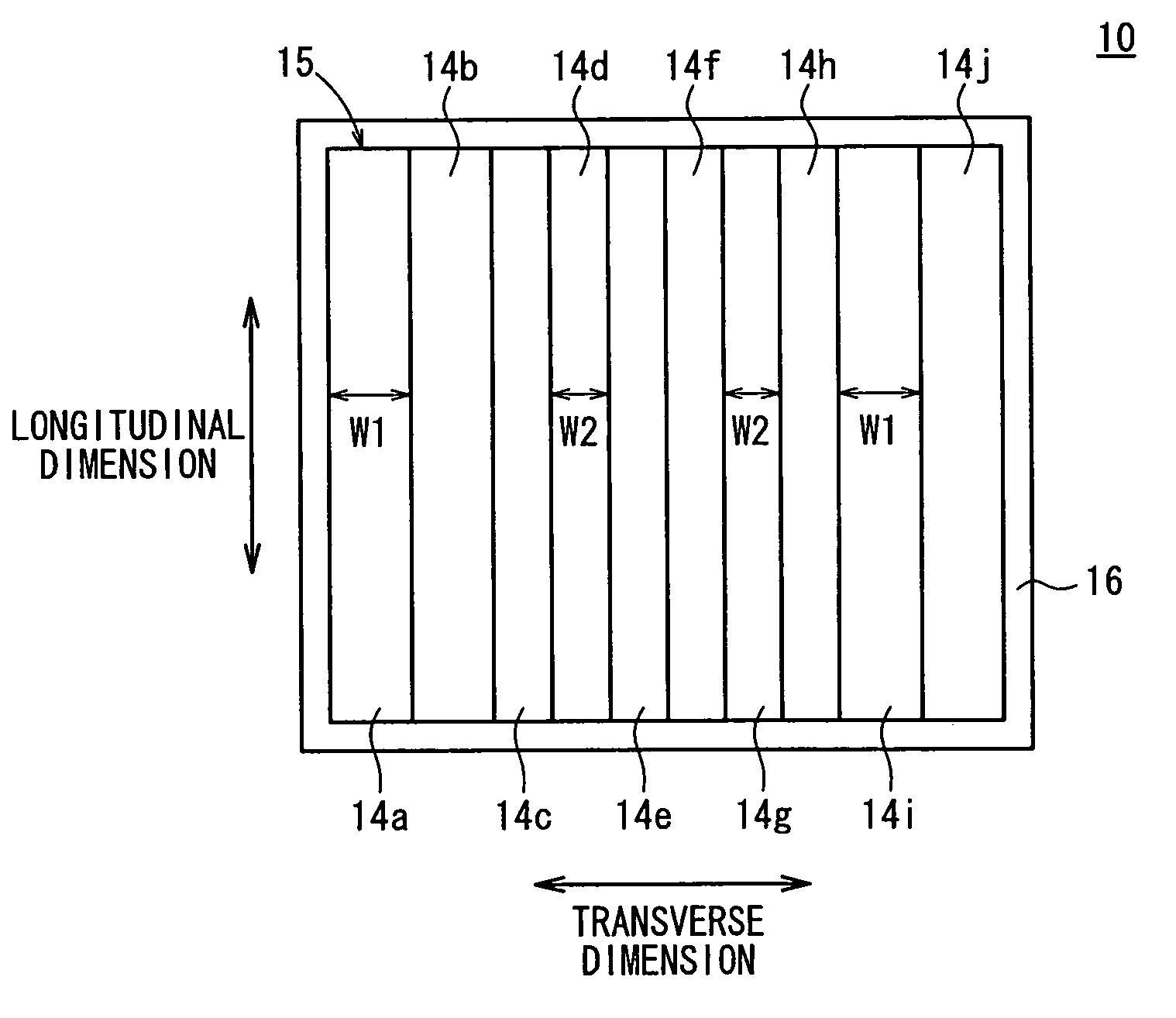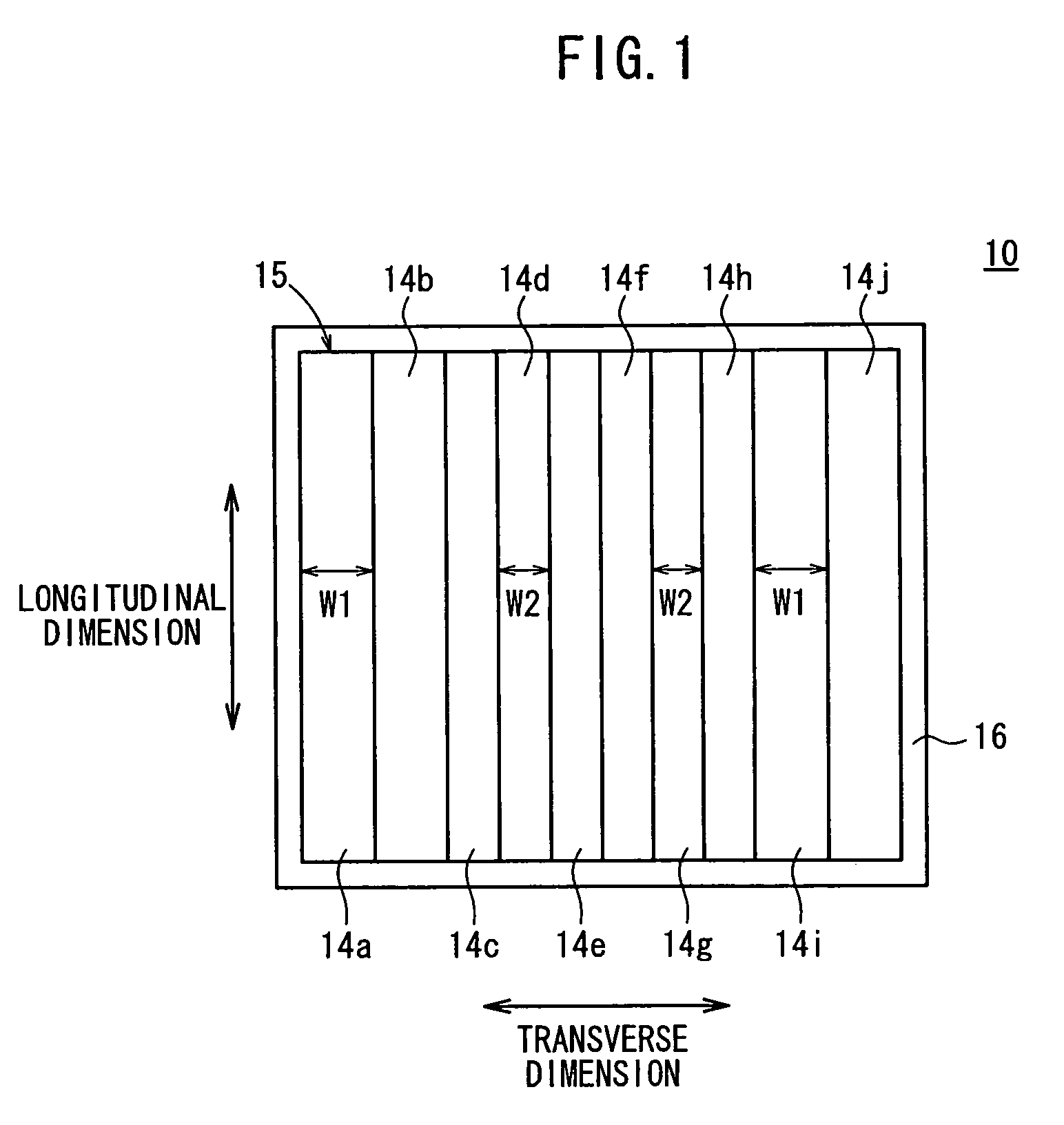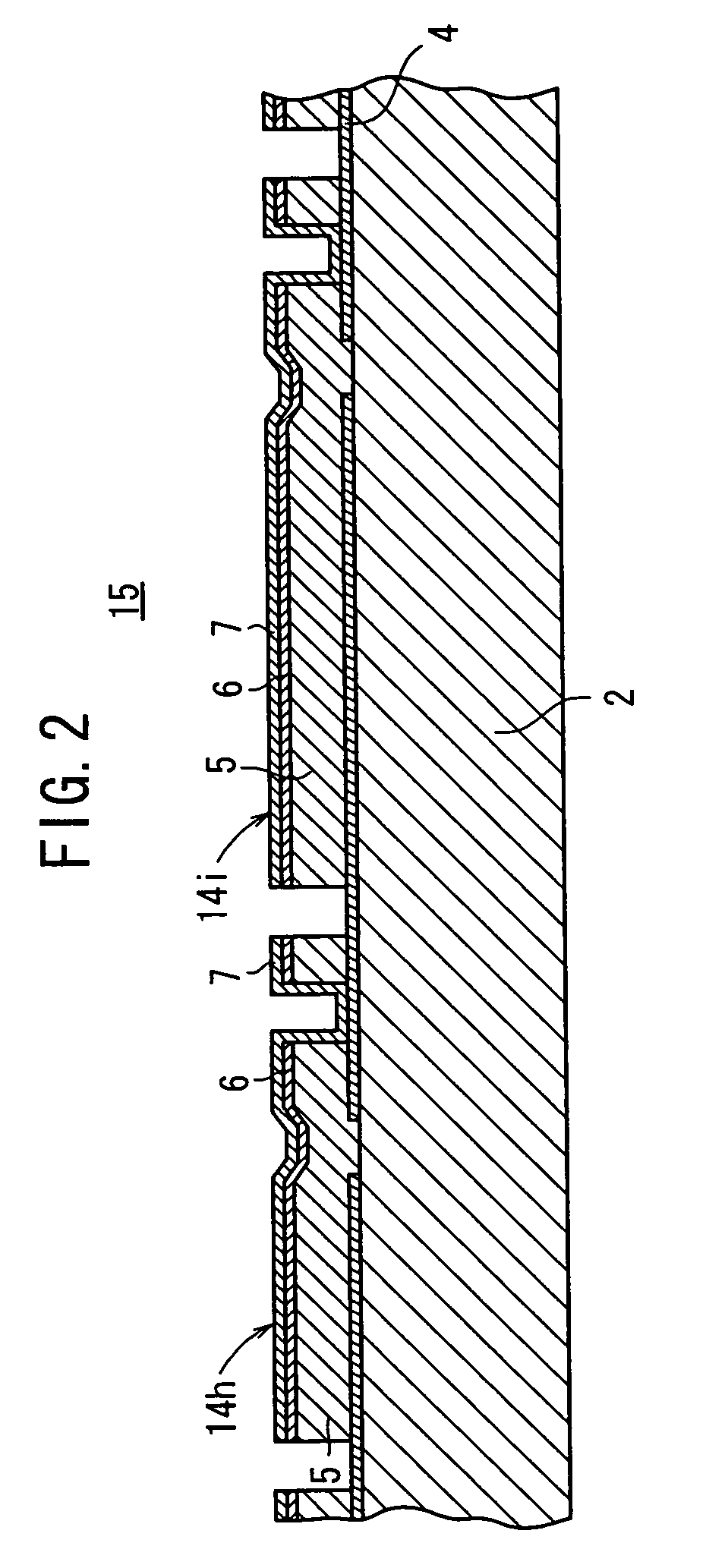Solar Cell Module
a solar cell and module technology, applied in the field of solar cell modules, can solve the problems of reducing the power generation capability the variation of the film thickness and composition of the precursor, and the light absorption layer and the transparent second electrode layer, so as to achieve the conversion efficiency of the overall solar cell module, excellent power generation characteristics, and improved power generation capability
- Summary
- Abstract
- Description
- Claims
- Application Information
AI Technical Summary
Benefits of technology
Problems solved by technology
Method used
Image
Examples
Embodiment Construction
[0029]Solar cell modules according to preferred embodiments of the present invention will be described in detail below with reference to the accompanying drawings.
[0030]FIG. 1 is a schematic plan view of a solar cell module according to an embodiment of the present invention. The solar cell module 10 comprises a cell unit 15 made up of an array of ten adjacent solar cells 14a through 10f and housed in a casing 16. The casing 16 is filled with a molded mass of resin, not shown, protecting the solar cells 14a through 14j.
[0031]FIG. 2 shows the solar cells 14h, 14i in enlarged fragmentary transverse cross section. The transverse structure of the cell unit 15 is substantially the same as the cell unit 3 shown in FIG. 5. Specifically, the cell unit 15 has the solar cells 14a through 14j monolithically disposed on a single glass substrate 2. Each of the solar cells 14a through 14j comprises, for example, a first electrode layer 4 made of Mo, a light absorption layer 5 made of CIGS, a buf...
PUM
 Login to View More
Login to View More Abstract
Description
Claims
Application Information
 Login to View More
Login to View More - R&D
- Intellectual Property
- Life Sciences
- Materials
- Tech Scout
- Unparalleled Data Quality
- Higher Quality Content
- 60% Fewer Hallucinations
Browse by: Latest US Patents, China's latest patents, Technical Efficacy Thesaurus, Application Domain, Technology Topic, Popular Technical Reports.
© 2025 PatSnap. All rights reserved.Legal|Privacy policy|Modern Slavery Act Transparency Statement|Sitemap|About US| Contact US: help@patsnap.com



